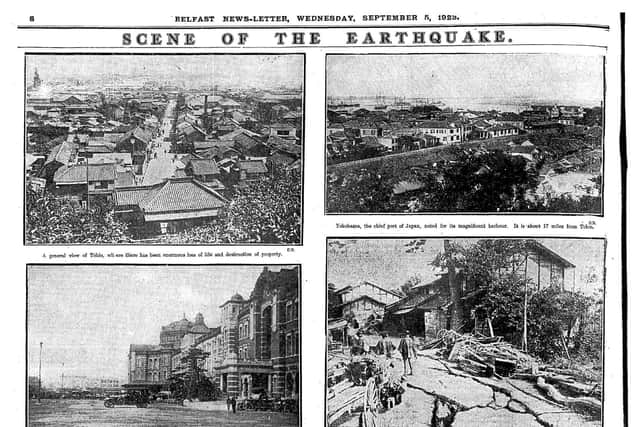News Letter reflects on destruction of the Great Kantō earthquake (1923)
and live on Freeview channel 276
It continued: “The statement that the loss of life in Tokyo alone is estimated at 150,000 postulates the most appalling results. For the full force of the earthquake was experienced over the eastern side of the island kingdom along a line of 300 miles.
“The great port and city of Yokohama, it is now stated, is practically blotted out, a mass of huddled ruins. And Yokohama was a city of over 400,000 inhabitants. Japan has always been an earthquake country. It lies in the very centre of the most active earthquake belt in the world – a belt extending from the Behring Sea to the China Sea and down to the Philippines. The whole of the Japanese Archipelago is eruptive and subject to earthquake.”
Advertisement
Hide AdAdvertisement
Hide AdThe News Letter noted that so frequent were quakes that “people take no heed to them”.


“The flimsy style of old Japanese house structures is an adaptation to meet the danger of the earthquake. Every house in a countryside may be wrecked and little or no loss of life caused, and the structural ruin quickly and at little cost made good.
“Therein lies the philosophy of the flimsy Japanese dwelling. The climate suits itself to this style of housing. But Japan in the present and the preceding generation has passed in large measure from old to new.”
But the News Letter noted that the Japanese having opened up the country “to the world's trade and the entering of Japan into the world's competition”. That in “great centres of population” they had adopted Western ways.
Advertisement
Hide AdAdvertisement
Hide Ad“There have sprung up large public works, factories, and warehouses, and the well-to-do have adopted European ideas of habitation. Wood, however, continues to be the principal building material for houses of the people in the cities. It is this prevalence of wood houses that has brought about the conflagrations in the big cities.”